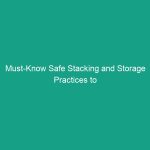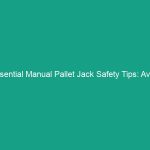Good Morning Team!
Today, we’re going to talk about an essential piece of equipment used in many of our tasks: the carabiner. Understanding the proper use of carabiners is crucial for maintaining Safety in our workplace. This Toolbox Talk will cover the common Safety risks associated with carabiners in the context of Health, Safety, and Environment (HSE) practices, and how we can avoid them.
Understanding Essential Carabiners
A carabiner is a metal loop with a spring-loaded gate that is used to quickly and reversibly connect components, primarily in climbing, rope rescue, and various industrial applications. In our work environment, carabiners are often used to secure tools and equipment, ensuring they don’t fall, which can lead to serious injuries or accidents.
One common misconception is that all carabiners are created equal. In reality, there are different types of carabiners designed for specific uses, and using the wrong type can lead to catastrophic failures. Understanding the different types and their appropriate applications is key to keeping our workplace safe.
Key Hazards, Risks, and Safety Considerations
Despite their simplicity, carabiners can pose significant risks if not used correctly. Here are a few key Hazards to be aware of:
- Overloading: Each carabiner has a specific weight limit. Exceeding this limit can cause the carabiner to fail.
- Improper Use: Using a carabiner for unintended purposes, like connecting to a non-load-bearing structure, can lead to accidents.
- Wear and Tear: Regularly inspect carabiners for signs of wear, such as cracks or corrosion. Using damaged equipment can lead to failure.
- Incorrect Clip Technique: Failing to properly clip a carabiner can result in the gate opening unintentionally, leading to dropped tools or equipment.
Ignoring these risks can have real-world consequences, including serious injuries or fatalities. For instance, a dropped tool can injure a colleague or damage equipment, leading to costly downtime. It’s essential that we all remain vigilant and proactive about these risks.
Best Practices, Procedures, & Actionable Advice
To ensure safety when using carabiners, follow these Best Practices:
1. Choose the Right Carabiner
Select the appropriate type of carabiner for your task. For heavy loads, use locking carabiners to prevent accidental openings. For lighter tasks, non-locking carabiners may be sufficient.
2. Inspect Regularly
Before each use, inspect your carabiner for any signs of damage. Look for:
- Cracks or deformation in the metal
- Functionality of the locking mechanism
- Corrosion or rust
If you find any damage, do not use the carabiner. Report it and replace it immediately.
3. Properly Load Carabiners
Always adhere to the manufacturer’s specifications regarding load limits. Do not combine multiple loads on a single carabiner unless it’s rated for such use.
4. Secure the Gate
When using locking carabiners, ensure that the gate is fully closed and locked before applying any loads. For non-locking carabiners, double-check that they are properly clipped.
5. Educate and Train
Participate in or conduct Training sessions on the proper use of carabiners. Sharing knowledge can prevent accidents and enhance our collective safety culture.
Real-World Example
Consider the case of a construction site where a worker was injured due to a faulty carabiner. The carabiner was overloaded and had not been inspected properly. This incident not only resulted in a serious injury but also led to a significant financial loss for the company. By adhering to safety protocols, we can prevent such incidents from occurring.
Regulations, Standards, and Compliance
In our industry, compliance with safety Regulations is non-negotiable. Familiarize yourself with relevant Standards such as:
- OSHA regulations on Personal Protective Equipment
- ANSI standards for carabiners
- Your company’s specific safety protocols
Understanding and following these regulations not only protects you but also safeguards your colleagues and the organization as a whole. Always prioritize compliance to ensure a safe working environment.
Employee Engagement & Discussion
Let’s take a moment to discuss. What safety challenges have you encountered related to carabiners? Have any of you experienced a close call or an incident involving carabiners? Sharing our experiences can help us learn and improve our safety practices.
Conclusion & Key Takeaways
In conclusion, understanding and respecting the use of carabiners is vital for our safety. Remember to:
- Select the right type of carabiner for your task.
- Inspect carabiners regularly for damage.
- Always adhere to load limits.
- Secure the gate properly before use.
- Engage in ongoing training and discussions about safety.
By applying these practices, we can protect ourselves and our coworkers from potential hazards. Thank you all for your attention and commitment to maintaining a safe workplace. Let’s prioritize safety every day!


